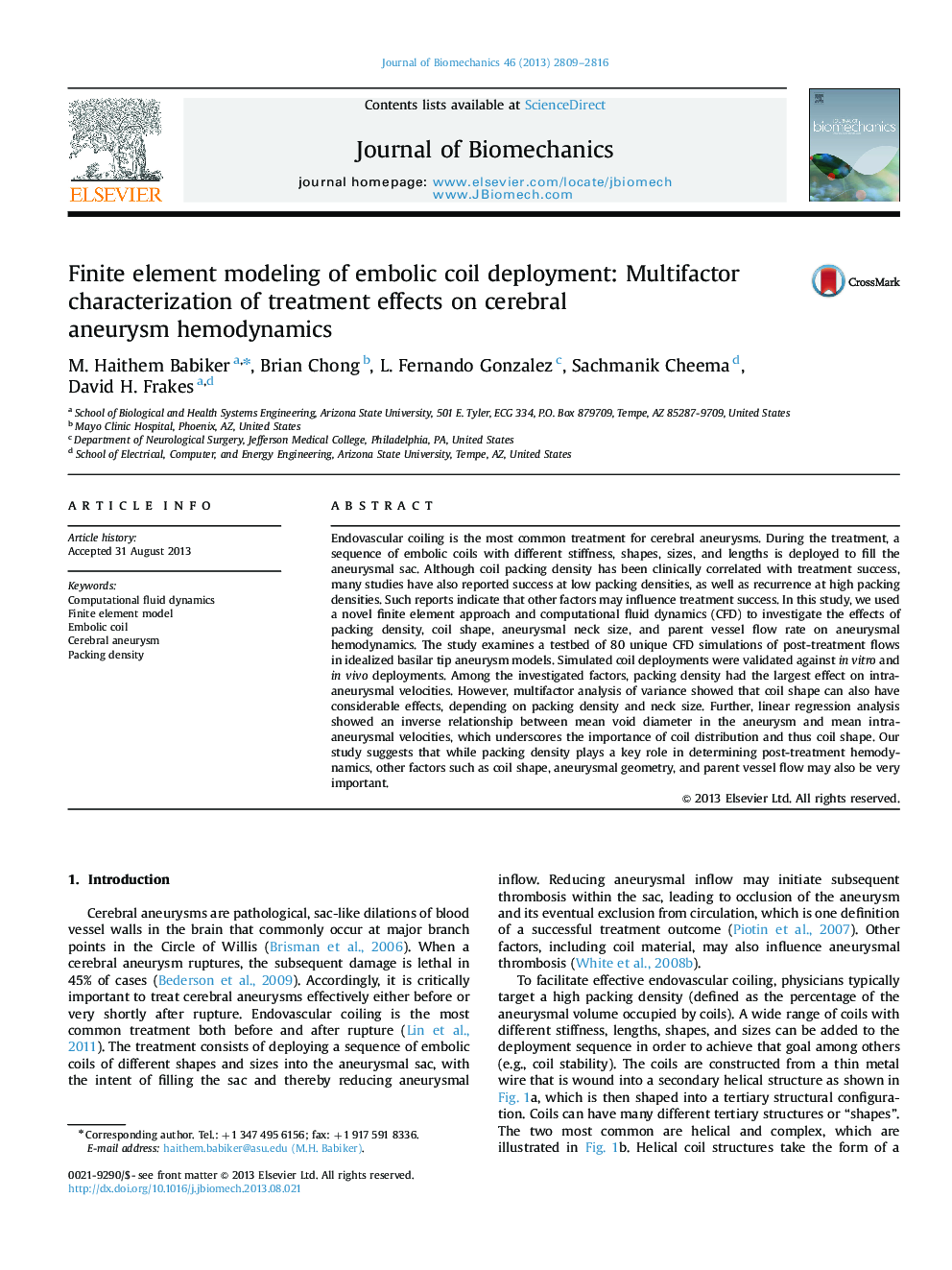| Article ID | Journal | Published Year | Pages | File Type |
|---|---|---|---|---|
| 10431695 | Journal of Biomechanics | 2013 | 8 Pages |
Abstract
Endovascular coiling is the most common treatment for cerebral aneurysms. During the treatment, a sequence of embolic coils with different stiffness, shapes, sizes, and lengths is deployed to fill the aneurysmal sac. Although coil packing density has been clinically correlated with treatment success, many studies have also reported success at low packing densities, as well as recurrence at high packing densities. Such reports indicate that other factors may influence treatment success. In this study, we used a novel finite element approach and computational fluid dynamics (CFD) to investigate the effects of packing density, coil shape, aneurysmal neck size, and parent vessel flow rate on aneurysmal hemodynamics. The study examines a testbed of 80 unique CFD simulations of post-treatment flows in idealized basilar tip aneurysm models. Simulated coil deployments were validated against in vitro and in vivo deployments. Among the investigated factors, packing density had the largest effect on intra-aneurysmal velocities. However, multifactor analysis of variance showed that coil shape can also have considerable effects, depending on packing density and neck size. Further, linear regression analysis showed an inverse relationship between mean void diameter in the aneurysm and mean intra-aneurysmal velocities, which underscores the importance of coil distribution and thus coil shape. Our study suggests that while packing density plays a key role in determining post-treatment hemodynamics, other factors such as coil shape, aneurysmal geometry, and parent vessel flow may also be very important.
Related Topics
Physical Sciences and Engineering
Engineering
Biomedical Engineering
Authors
M. Haithem Babiker, Brian Chong, L. Fernando Gonzalez, Sachmanik Cheema, David H. Frakes,
